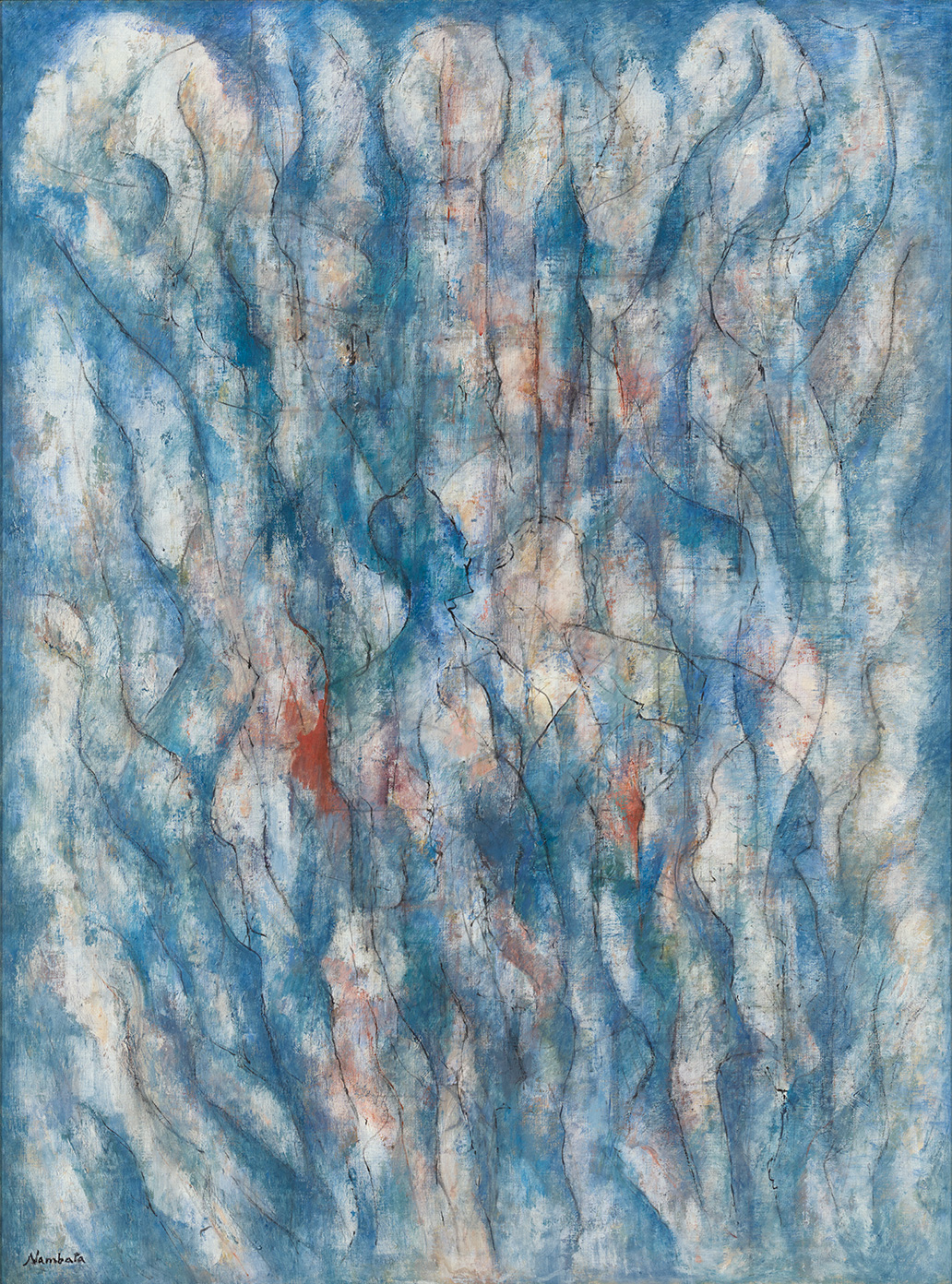Introduction

1976
The National Museum of Modern Art, Tokyo
photo: Otani Ichiro
Nambata Tatsuoki (1905–1997) began his career as an artist before WWII, and in the post-war period he left a significant mark as a pioneer of abstract painting in Japan. As a young man interested in poetry and philosophy at the end of the Taisho period, Nambata met Takamura Kotaro, who mentored and inspired him to become a painter. Nambata began his career by depicting familiar landscapes and a wistful yearning for days of yore. After the war, he shifted to creating abstract works, and although he digested new ideas that came from abroad, he was not swept up by these trends. He found his own way, independent of any particular movement. His work is highly regarded as a milestone of abstract painting in Japan.
Terada Kotaro —donor of the Tokyo Opera City Art Gallery's collection— begin collecting in earnest after his encounter with the works of the standout painter Nambata Tatsuoki, and that encounter also led to Terada conceiving the “Oriental Abstraction” theme that became one of the guiding concepts of his collection. It goes without saying that Nambata figures most prominently in the museum’s Terada Collection.
Marking the 120th anniversary of Nambata's birth, this exhibition presents the full works of Nambata's entire artistic career for the first time in a quarter of a century, examining it from a contemporary perspective. It will incorporate works from not only the museum's collection, but also works from museum collections in Japan and from private collections.
Exhibition Highlights
- The representative works of Nambata Tatsuoki, a pioneer of abstract painting in Japan, are brought together for the first time in a quarter century.
- The exhibition traces the journey of Nambata Tatsuoki, who was inspired to become a painter after meeting Takamura Kotaro, a giant of modern art. It traces Nambata’s path to becoming a standout abstract painter, from the Showa era to the Heisei era.
- Behind his bold artistic defiance, Nambata Tatsuoki harboured inner conflict, inner poetry, pain and hope. The exhibition sheds light on the painter’s inner drama.
- The exhibition features more than 100 pieces, from the large paintings that would become his most important works to watercolours, prints, drawings, studies, sketchbooks, and other exhibits.




